The Nikon Zfc’s substance doesn’t quite match its iconic style
Opinion: There's one big crack in the Zfc's flawless facade
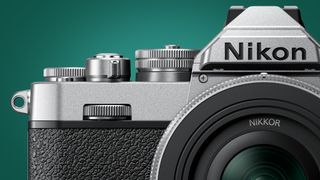
The new Nikon Zfc proves that classic camera brands still have one big superpower that trumps megapixels, image quality or specs: nostalgia.
With a photographic history that stretches back to the late 1940s and through the golden age of film cameras, Nikon sits on almost unlimited reserves of heritage – and it's mined those archives again with the stunning new Nikon Zfc.
The Zfc is a modern reimagining of the Nikon FM2 SLR from 1982 (see further down), a much-loved film camera that is fully deserving of its classic status. But however well executed, the retro styling trick has been pulled off before by Fujifilm and Olympus – and on paper, the Nikon Zfc is still a bit lacking compared to its rivals.
- These are the best mirrorless cameras you can buy right now
- Or check out our guide to the world's best cameras
- Nikon Zfc release date, price, specs and features
It's important not to get too specs-obsessed with cameras like the Nikon Zfc. After all, it's a mid-range mirrorless camera aimed at beginners, or Nikon fans who want a fun companion for street or travel snapping.
The Zfc isn't exactly underpowered either – it's effectively a Nikon Z50 in different clothes, which means you get the combo of the same 20.9MP DX sensor and Expeed 6 processor, plus some newer tricks like Eye AF in both video and stills.
But the main drawback with the Zfc is its lens options. Despite the arrival of two new lenses with Nikon's new camera, the number of native options for Z-series cameras with DX sensors (in other words, the Zfc and Z50) still effectively stands at just three.
This could improve in the future, but Nikon's priority remains full-frame Z-series cameras and lenses – and that means the Zfc is unlikely to ever offer the versatility or affordability of its main rivals.
Get the best Black Friday deals direct to your inbox, plus news, reviews, and more.
Sign up to be the first to know about unmissable Black Friday deals on top tech, plus get all your favorite TechRadar content.
Glass completion
Nikon is keen to stress that the Nikon Zfc's lens options actually stands at several hundred, when you factor in the ability to adapt older F-mount lenses using the optional FTZ adaptor ($249 / £269 / AU$429) or using its full-frame Z-mount glass.
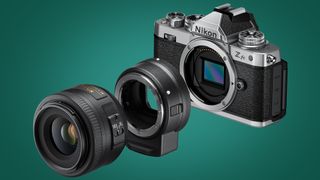
And that's a fair point – if you do have older Nikon lenses that you're looking to use on a retro mirrorless camera, there's no doubt the Zfc is a fantastic new option. But for everyone outside that niche, the greater appeal will be using modern glass with the latest autofocus powers.
This is possible with lenses like the new Nikkor Z 28mm f/2.8 SE, which has been designed to match the Zfc. It gives you a 42mm equivalent focal length on the Zfc (due to its cropped DX sensor), making it ideal for portraits and video.
But right now, your prime options beyond that, like the Nikkor Z 35mm f/1.8 S, come with full-frame price tags. And wide-angle glass for shooting things like landscapes is non-existent, because that needs native DX lenses.
There are some third-party lenses for the Z-mount, like those from Viltrox and Samyang, but many of these are manual focus-only or straight adaptations of DSLR glass, and there aren't yet enough to fill the gap.
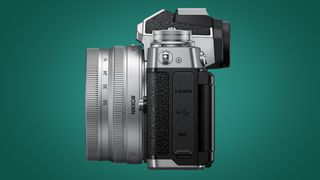
To be fair, prospective owners of the Nikon Zfc probably aren't looking to amass a huge collection of lenses. And it's possible some might see buying full-frame glass as an investment for the future, so they can use the same lenses when they upgrade to a full-frame body like the Nikon Z6 II further down the line.
But for hobbyist shooters who want a retro mirrorless body as their main camera – which is surely Nikon's main target audience – the Zfc simply can't compete with the versatility of its rivals from Fujifilm and Olympus. And this is where Nikon's late arrival to the throwback fancy dress party becomes important.
- Check out our guide to the best Nikon Z lenses
Late to the party
The Zfc isn't the first time Nikon's made a retro digital camera. Back in 2013, it launched the Nikon Df (below), a full-frame DSLR with throwback styling. The Nikon 1 J5, from the ill-fated and now-discontinued Nikon 1 series, also flirted with retro flourishes in 2015.
But perhaps burned by those earlier experiments, this is the first time Nikon has embraced vintage looks on a modern mirrorless camera. And the problem is its main rivals, Fujifilm and Olympus, have been partying in this stylish, wood-paneled retro bar for years.
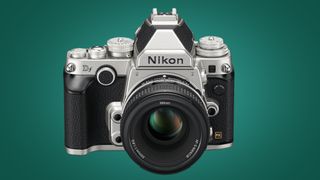
The Fujifilm X-series, which includes cameras like the Fujifilm X-S10 and Fujifilm X-T4 with the same-size sensor as the Nikon Zfc, has steadily grown in popularity over the last decade. This means it has a collection of 32 native lenses, and a range of stylish camera bodies – all inspired by old Fujica cameras from the 1980s – for different types of photographer.
And even though the Olympus cameras division was sold to an investment fund last year, cameras like the Olympus OM-D E-M10 Mark IV continue to be affordable, retro-flavored options for beginners or anyone looking for a travel-friendly body. A big part of this appeal is, again, lenses – because the Micro Four Thirds system was simultaneously built by two manufacturers (Panasonic and Olympus) over many years, the lens choices are unrivaled.
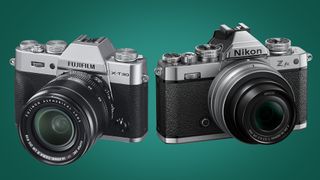
For both Fujifilm and Olympus, this means their Nikon Zfc equivalents mostly have two lens options at every focal length – a compact, affordable one, and a brighter, larger one for bokeh fans. This is important, because buying a camera is as much about choosing the right lenses, as much as the body itself.
Choice is good
It's not just a question of lenses, either. Because Fujifilm doesn't have a full-frame camera lineup to push photographers towards, it's able to go all-out on APS-C models like the Fujifilm X-S10.
The X-S10 ($999 / £949 / AU$1,699, body-only) has almost the same price tag as the Nikon Zfc, but comes with the major bonus of in-body image stabilization (IBIS), a feature that's handy for both stills and video shooting, and a large grip for balancing longer lenses. The latter means it's a slightly different proposition to the Zfc, but the X-S10 similarly offers modern mirrorless shooting power with an old-school dials and controls.
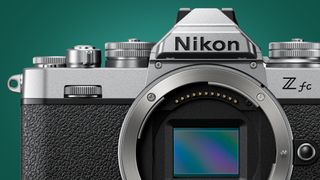
None of this is makes the Nikon Zfc a case of style over substance at all, and we need to test it fully before giving our final verdict. But the lens situation and strength of well-established rivals in this space are certainly hurdles for it to overcome before it attracts non-Nikon fans.
On the other hand, it's brilliant to see more choice in affordable cameras below the many full-frame choices out there. Canon, Nikon, Sony and Panasonic have all understandably focused on full-frame cameras in recent years, as the enthusiast market has shrunk. And we had feared that Nikon had abandoned the DX-format part of its Z-series, with only the Nikon Z50 arriving in the past two years.
But the Nikon Zfc is a marker of its intent to grow in the space. And the Zfc's design is a classic that will attract both those who remember mechanical simplicity of SLRs like the Nikon FM2, and others who simply admire its distinct personality. We're looking forward to giving the Nikon Zfc a full test out in the field – and seeing more of them out in the wild, too.
- These are the best Nikon cameras you can buy right now

Mark is TechRadar's Senior news editor. Having worked in tech journalism for a ludicrous 17 years, Mark is now attempting to break the world record for the number of camera bags hoarded by one person. He was previously Cameras Editor at both TechRadar and Trusted Reviews, Acting editor on Stuff.tv, as well as Features editor and Reviews editor on Stuff magazine. As a freelancer, he's contributed to titles including The Sunday Times, FourFourTwo and Arena. And in a former life, he also won The Daily Telegraph's Young Sportswriter of the Year. But that was before he discovered the strange joys of getting up at 4am for a photo shoot in London's Square Mile.